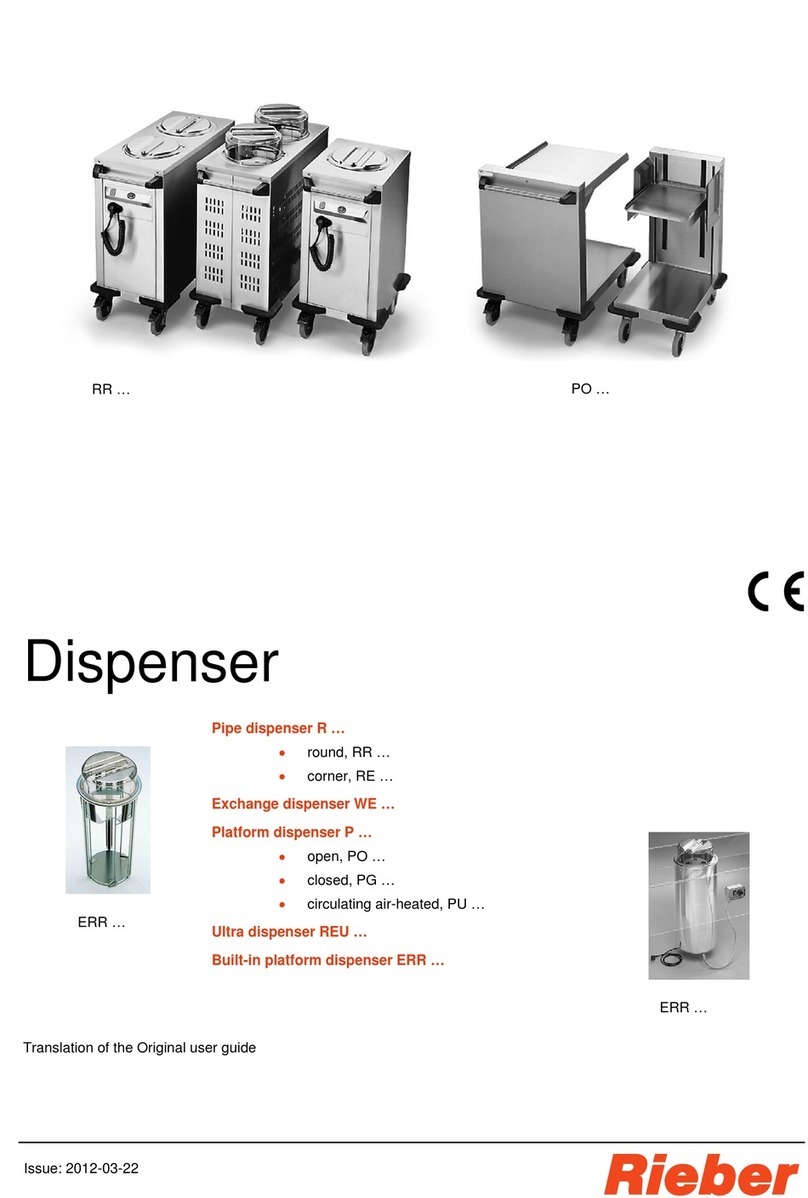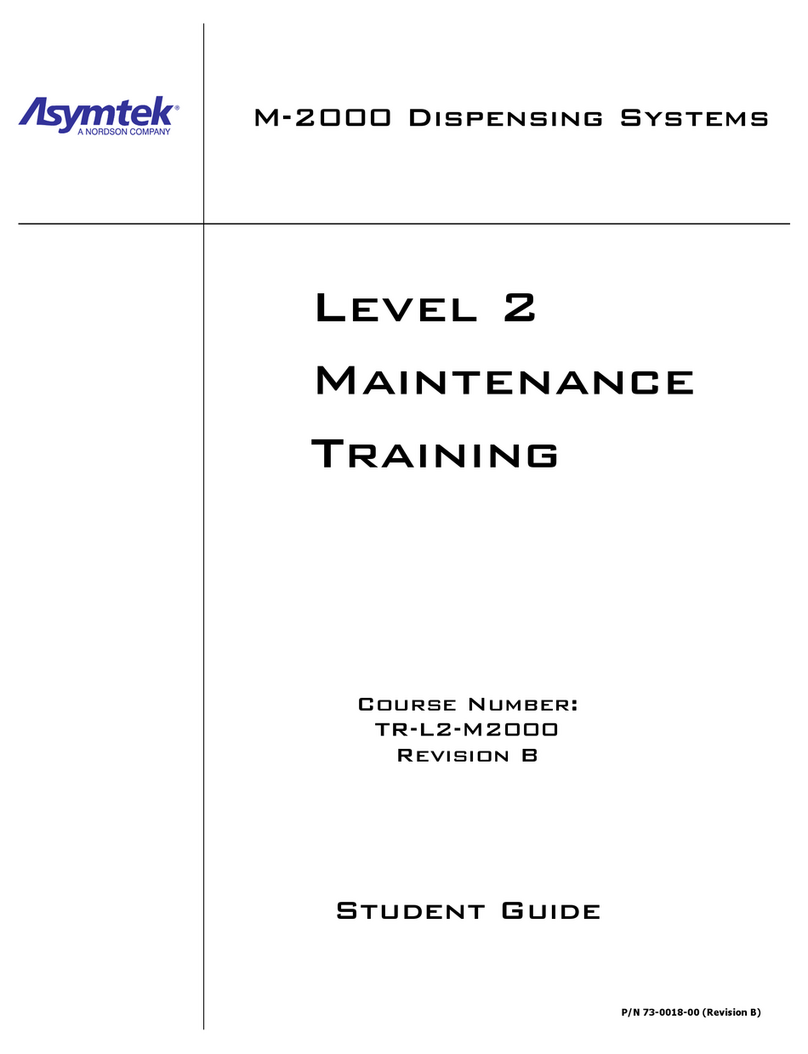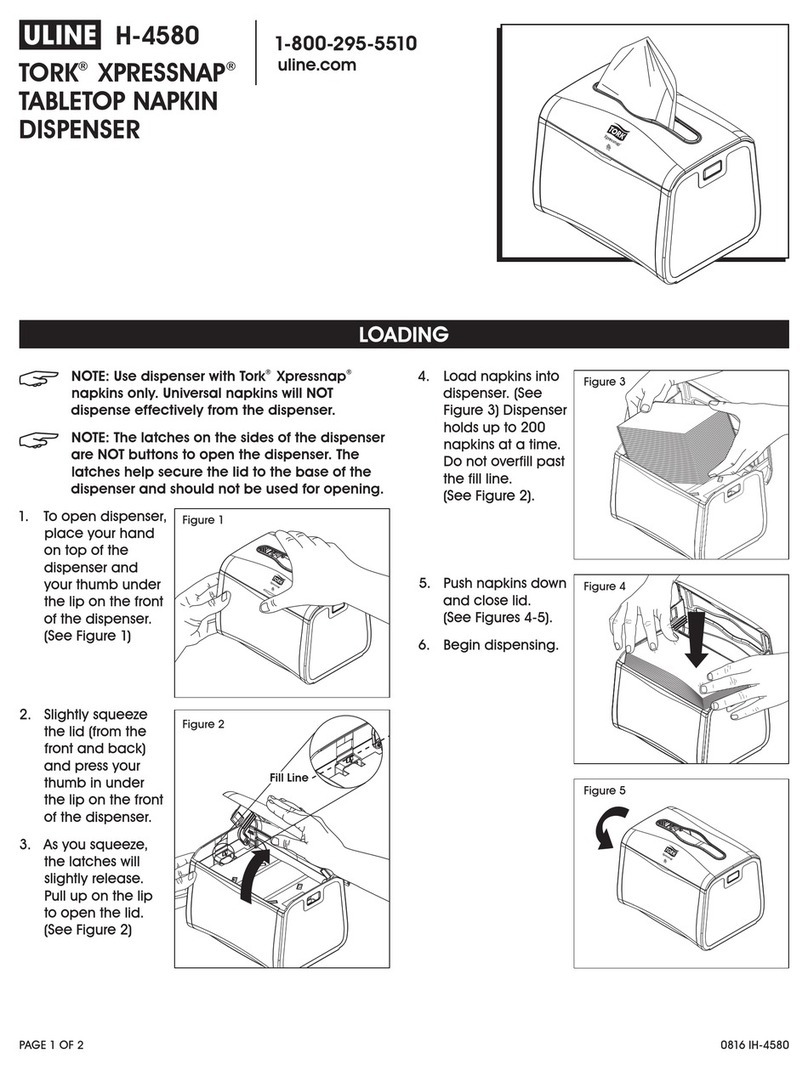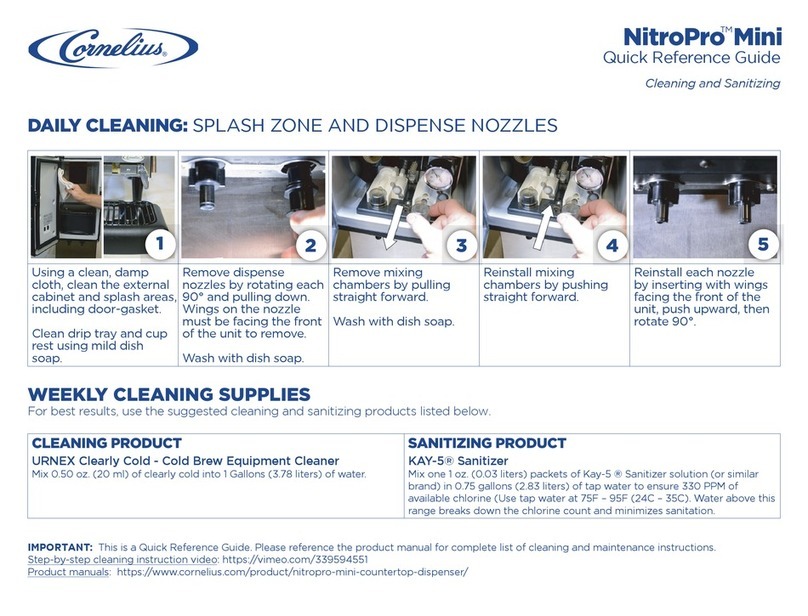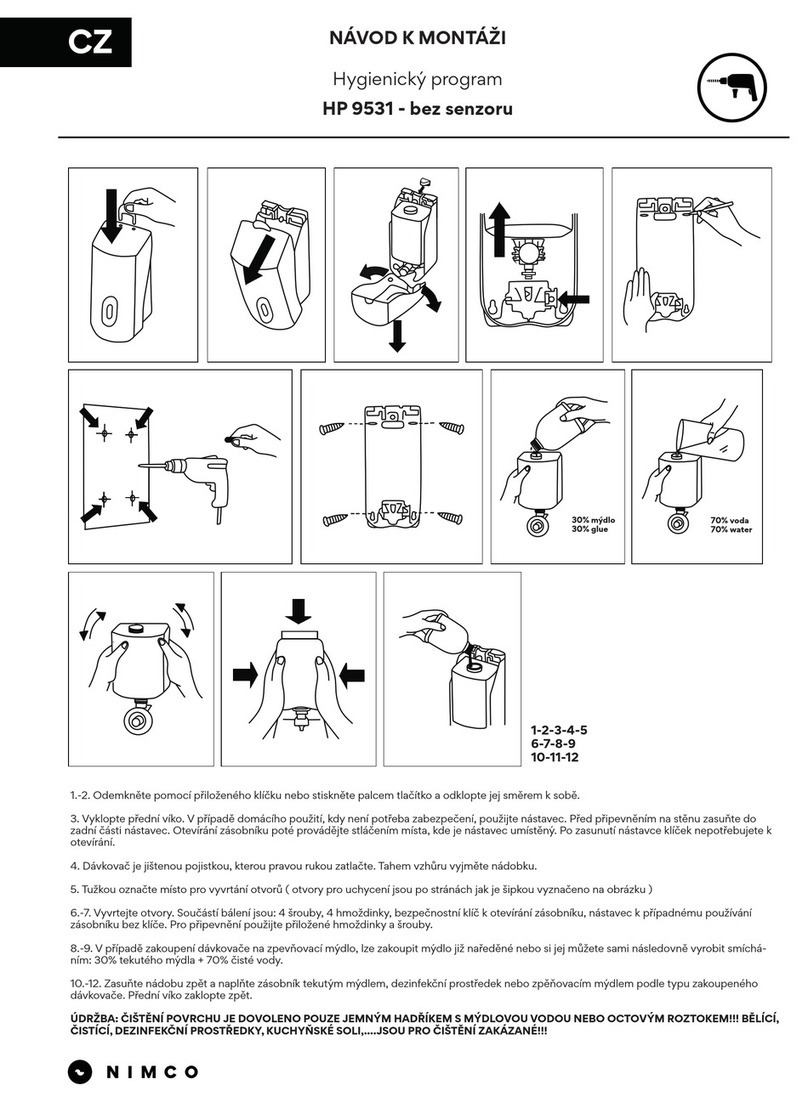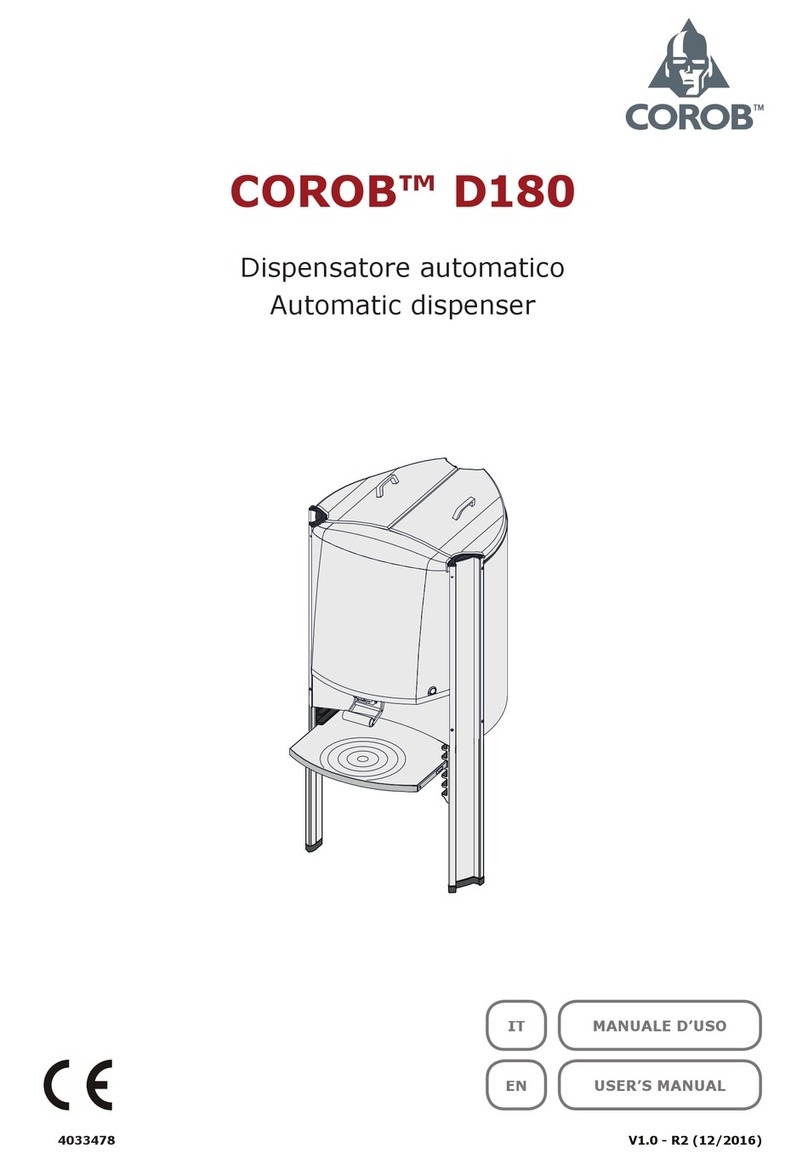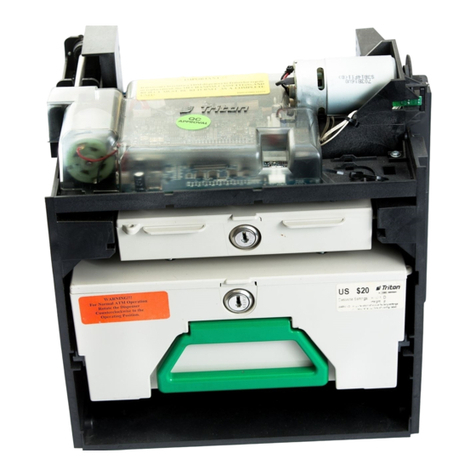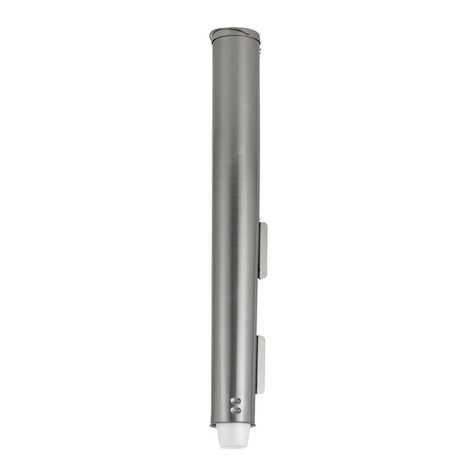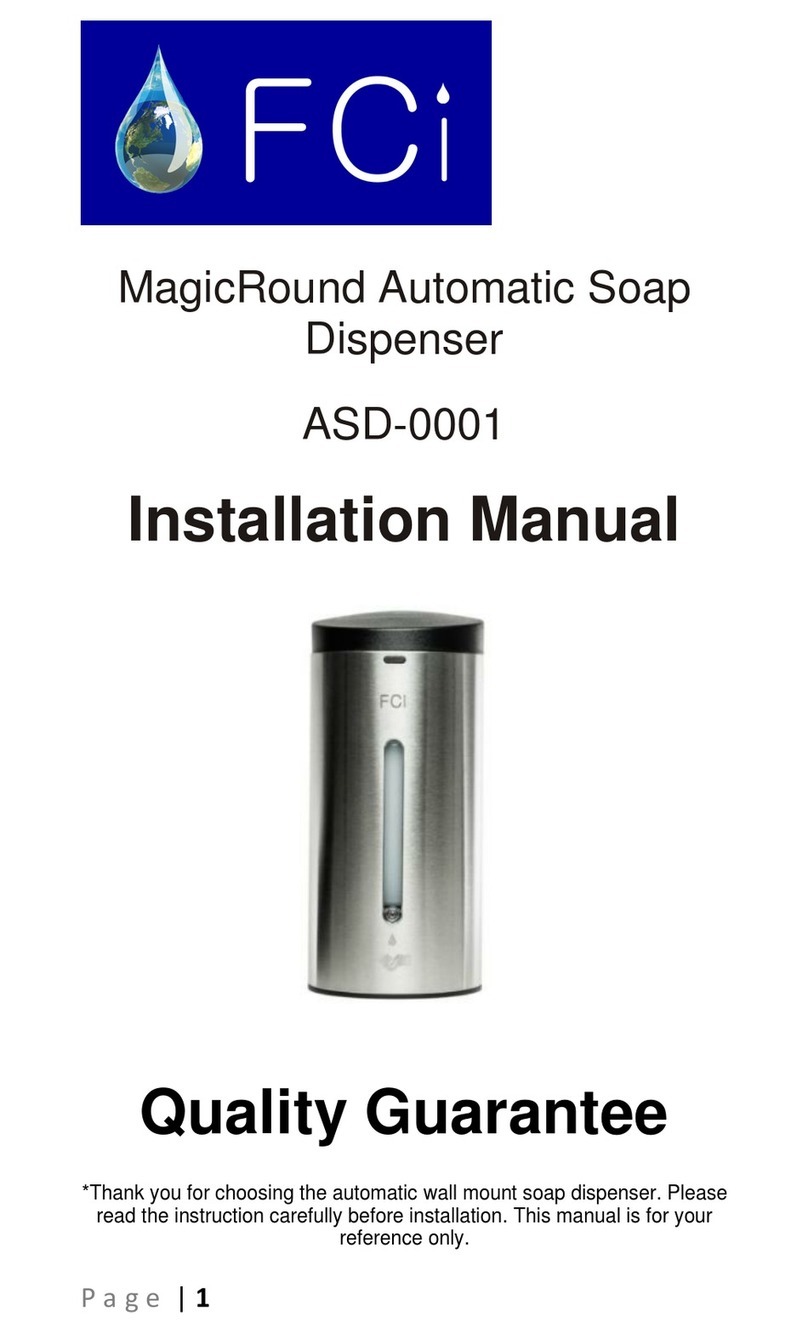Rieber RR Series User manual

Issue: 2011-01-04
Dispensers
Pipe dispensers R …
•
••
•round, RR …
•
••
•square, RE …
Exchange dispensers WE …
Platform dispensers P …
•
••
•open, PO …
•
••
•closed, PG …
•
••
•circulating air-heated, PU …
Ultra dispenser REU …
Built-in dispensers ERR …
Original user guide
RR …
PO …
ERR …
ERR …

Contents
2Rieber GmbH & Co. KG
Rieber Professional.
Our solutions guarantee high quality, safety and, above all,
excellent energy efficiency and cost effectiveness.
Contents
1
Revision index ................................................................................................................................................. 4
2
Important information ..................................................................................................................................... 4
2.1
Use of this guide ................................................................................................................................................4
2.2
Representation conventions in the text ..............................................................................................................5
2.3
Structure of safety instructions........................................................................................................................... 5
3
Description of product .................................................................................................................................... 6
3.1
Identification of parts using an illustrated example ............................................................................................. 6
3.2
Product information............................................................................................................................................6
3.3
Accessories and their use..................................................................................................................................7
4
Purpose ............................................................................................................................................................ 7
4.1
Intended use of dispensers, general .................................................................................................................. 7
4.2
Use of pipe dispensers R ... ...............................................................................................................................8
4.3
Use of exchange dispensers WE ... ...................................................................................................................9
4.4
Use of platform dispensers PO … .................................................................................................................... 10
4.5
Use of ultra dispensers REU ... ........................................................................................................................ 12
4.6
Use of built-in dispensers ERR ... .................................................................................................................... 12
5
General safety instructions .......................................................................................................................... 13
5.1
Basic principles ................................................................................................................................................ 13
5.2
On use of electrical appliances ........................................................................................................................ 13
5.3
Operator's duties.............................................................................................................................................. 15
5.4
Personnel qualification..................................................................................................................................... 15
5.5
Provide protective equipment for personnel ..................................................................................................... 16
5.6
Appliance-specific safety instructions............................................................................................................... 16
5.7
Information about regulations to be followed.................................................................................................... 17
5.8
What to do in an emergency ............................................................................................................................17
6
Before first use .............................................................................................................................................. 18
6.1
Transport ......................................................................................................................................................... 18
6.2
Commissioning ................................................................................................................................................ 18
7
Adjust the dispenser to the crockery used ................................................................................................. 19
7.1
Pipe dispenser R … ......................................................................................................................................... 19
7.2
Exchange dispensers WE … ........................................................................................................................... 21
7.3
Platform dispenser PO … ................................................................................................................................ 23
7.4
Ultra dispenser REU ….................................................................................................................................... 24
8
Information on using the product ................................................................................................................25
8.1
Use the appliance only for its intended use...................................................................................................... 25
8.2
Operation ......................................................................................................................................................... 26
9
Cleaning, maintenance and care.................................................................................................................. 27
9.1
Avoid dangers due to hot parts or areas ..........................................................................................................27
9.2
Avoid dangers due to electricity ....................................................................................................................... 27
9.3
Choose the correct cleaning method................................................................................................................ 28
9.4
Clean and service stainless steel parts ............................................................................................................ 28
9.5
Cleaning the casters ........................................................................................................................................ 28
9.6
Clean and service plastic parts ........................................................................................................................ 29
9.7
Dry the appliance to keep it ready for next use ................................................................................................ 29

Contents
Rieber GmbH & Co. KG 3
10
Fault - What now? ......................................................................................................................................... 29
11
Warranty and liability.................................................................................................................................... 31
12
Address of manufacturer.............................................................................................................................. 32

Revision index
4Rieber GmbH & Co. KG
1 Revision index
Revision Change
2011-01-04 First issue
2 Important information
2.1 Use of this guide
This guide contains important information about how you can use the product safely and correctly.
IMPORTANT
Protect yourself against potential hazards and prevent damage to your product.
►
It is essential that you read the user guide before using the product for the first time.
►
Keep this guide in a safe place and pass it onto the next owner should you wish to
part with the product.
Customers have often expressed their desire for a compact manual, as an alternative to numerous
instructions for product variants with similar functions.
If there are any deficits from your point of view, please do not hesitate to let us know. With your help,
we will try to get even better.
Please add your notes here:

Important information
Rieber GmbH & Co. KG 5
2.2 Representation conventions in the text
. . . Highlighting . . . , text to be highlighted
•
••
•Listings are represented in this way.
Instructions on certain actions are represented in this way.
▌The result of the action is represented in this way.
See ‘. . . ’ ; cross-references are represented in this way.
Notes
NOTE
indicates potential damage to property without any personal injury.
Failure to follow these instructions may cause damage to property.
User tip
►
Useful information or tip.
2.3 Structure of safety instructions
The signal words DANGER - WARNING - CAUTION classify the possible degree of risk of bodily injury in an
actual situation. Injuries can be prevented provided that the relevant instructions are followed.
The warning triangle symbol indicates a "General Danger".
DANGER!
indicates imminent danger.
Failure to follow these warning instructions will result in serious bodily
injury or even death.
WARNING!
indicates a potentially hazardous situation.
Failure to follow these warning instructions may cause serious bodily
injury or even death.
CAUTION!
indicates a potentially harmful situation.
Failure to follow these warnings may cause minor bodily injury.

Description of product
6Rieber GmbH & Co. KG
3 Description of product
This section provides useful information about the installation and operation of this product.
3.1 Identification of parts using an illustrated example
Identifies the parts which are important for understanding the subsequent sections.
1 Push handle
2 Lid
3 Casing
4 Rocker switch with green indicator
5 Power controller
6 Holder holding the electrical connector
7 Corner bumper
8 Vents
9 Caster with parking brake
9 Type plate
3.2 Product information
Casing of chrome nickel steel. Adjustment of uniform serving height by connecting and hanging out the
tension springs. 4 corner bumpers. Galvanized casters in accordance with DIN 18867, part 8. Wheel
diameter 125 mm. 2 swivel casters and 2 swivel casters with brakes, anti-static tires.
Electrical unit equipped with pull-out spiral cable 2.5 m with earthed connector and dummy socket
outlet, rocker ON/OFF switch with green indicator lamp, thermostat controller (continuous control), 1N
AC 230V 50/60Hz. Environmental conditions +5°C up to +40°C. Casing with double-wall insulation.
Cooling unit refrigerant R134a. Emitted sound pressure level closed 52.0 dB, emitted sound pressure
level open 61.5 dB.
Protection class IPX5 according to DIN EN 60529 (jet-proof, nozzle, from any angle).
2
1
3
9
7
6
4
5
10

Purpose
Rieber GmbH & Co. KG 7
3.3 Accessories and their use
See Internet http://www.rieber.de
4 Purpose
This chapter describes the intended use and contains warnings against misuse, for your safety.
4.1 Intended use of dispensers, general
Generally, the following are intended uses for the product:
•
••
•For mobile meal services in catering, hotels and restaurants; but also for managed
care facilities and schools.
•
••
•For stacking and dispensing of the relevant parts at serving height.
WARNING! Only remove the parts at serving height. Jammed parts may generate
high forces which may unload suddenly. Stacked parts must be centred and guided.
•
••
•WARNING! To prevent persons from injuring themselves by shearing and crushing
by reaching into the inside of the unit or touching hot surfaces, use of the product in
public/for self-service should only be allowed under constant supervision.
•
••
•WARNING! Prevent unintentional moving of the unit and the resulting hazards.
Always secure the unit in its position by applying the parking brake.
•
••
•For neutral, cold or hot dispensing of stackable parts.
•
••
•WARNING! Wear personal protective equipment such as protective gloves which
will prevent you from burning your arms or hands on hot parts, such as plates, meal
trays, etc.
•
••
•The unit may only be used by instructed persons, minimum age 16 years.
•
••
•Comply with hygiene requirements according to HACCP.
Prevent any potential misuse in advance:
•
••
•WARNING! Never operate the product unsupervised.
•
••
•CAUTION! Baskets made of plastic are not suitable for heated crockery dispensers!
•
••
•Not intended for private use at home.
•
••
•Do not lean against or sit on this product.
•
••
•Keep any combustible or explosive fluids away from heatable appliances. Otherwise
fire or explosion may result.
•
••
•Heatable units may only be used for heating crockery. Do not use to heat up a room.
•
••
•Do not use this product under unfavourable floor conditions.
We are not able to rule out the possibility of marks appearing on the floor due to
friction with casters or the formation of scratches due to split cracks in the casters.
We are not able to rule out the possibility that the casters may be damaged or
become unusable due to thresholds or sharp edges on the floor.
•
••
•These products may only be moved manually, machine-supported moving is not
permissible.
•
••
•When transporting mobile units, wear safety shoes.

Purpose
Rieber GmbH & Co. KG
4.2 Use of pipe dispensers R ...
Generally, the following are intended uses for the product:
•
••
•For holding identical stackable plates.
Plates, bowls or cups can be stacked.
•
••
•Max. load capacity for each pipe: 75 kg.
4.2.1 Pipe dispenser, round RR … is designed for round parts
Type identification
R R ―Pipe dispensers
R R ―… round
R R V ―1 … with 1x adjustable pipe, unheated
R R V ―… with adjustable pipe.
Desired plate diameter can be fixed by means of 3 adjustable
rods.
R R ―H … heated, static heating
R R ―U … heated,
circulating air fan heating
R R ―1 … number of pipes
R R ―L … provided with ventilation slots.
For pre-cooling plates etc. in cold or freezer rooms
With RRV 190-280: from Ø 190 mm to Ø 280 mm.
With RRV 230-320: from Ø 230 mm to Ø 320 mm.
RRV - H
RRV – L2
RRV – H1

Purpose
Rieber GmbH & Co. KG 9
4.2.2 Pipe dispenser, square RR … is designed for square parts
Type identification
R Pipe dispensers
R E … square
R H … heated, static heating
R U ―… heated,
circulating air fan heating
R 2 … number of pipes
4.3 Use of exchange dispensers WE ...
Generally, the following are intended uses for the product:
•
••
•6 change rods can be installed as required in 18 holes. Adjustable for crockery parts
of different sizes.
•
••
•Max. load capacity 150 kg
REH - 2
WE-H
R …
WE-Q 1/1
R …

Purpose
10 Rieber GmbH & Co. KG
Type identification:
WE Exchange dispenser
WE ―H … heated, static heating
WE ―U … heated,
circulating air fan heating
WE ―Q 1/1 … square, detached unit
With WE-H-750: Special design with extremely shortened length for flush placement in niches, push-
handles with bumper, 2 corner bumpers
4.4 Use of platform dispensers PO …
Generally, the following are intended uses for the product:
•
••
•For stacking and dispensing of trays or crockery baskets.
•
••
•Max. load capacity 200 kg
4.4.1 Platform dispensers, open PO …
Type identification:
PO Platform dispenser, open
PO ―SV ... Food distribution
PO ―GN … Gastronorm
PO ―Q … square
PO ―SV1/1
Special design with side tray guide for tray stacking
PO ―TA1/1
Special design with side tray guide for tray stacking

Purpose
Rieber GmbH & Co. KG 11
4.4.2 Platform dispenser, closed, also refrigerated PG …
Type identification:
PG Platform dispenser, closed
PG ―GN … Gastronorm
PG ―SV ... food distribution
PG ―Q … square
PG ―4S … for 4 cloches per level
PG ―6S … for 6 cloches per level
PK ―Q1/1 … circulating air cooled
4.4.3 Platform dispensers, circulating air heated
and meal tray dispenser, circulating air heated PU …
Type identification:
PU Platform dispenser, circulating air heated
PU ―GN … Gastronorm
PU ―SV ... food distribution
PU ―Q … square
PU ―M … stainless steel hinged lid;
only suitable for stainless steel baskets
PU-M
R …

Purpose
12 Rieber GmbH & Co. KG
4.5 Use of ultra dispensers REU ...
Generally, the following are intended uses for the product:
•
••
•For stacking and dispensing and heating of heat/ultra bowls from Rieber.
Type identification:
REU Ultra dispenser
REU ―P … for heating up heat/ultra-bowls
4.6 Use of built-in dispensers ERR ...
Generally, the following are intended uses for the product:
•
••
•Unheated or heated pipe dispensers are designed for stationary installation in a
counter or serving system.
Type identification:
ERR Built-in dispenser
ERR ―V … adjustable pipe, unheated
ERR ―V ―H … adjustable pipe, static heating
REU-P
R …
ERR-V-H
R …
ERR-V
R …

General safety instructions
Rieber GmbH & Co. KG 13
5 General safety instructions
This section covers residual risks and hazards associated with the intended use of the product. We have
provided a list of all generally valid safety instructions which must be followed.
In the following section, safety information relating to a particular operation or situation is placed before the
appropriate operation step or description of the situation.
5.1 Basic principles
This product meets the current state of the art and complies with all acknowledged technical safety-
related regulations. Nevertheless hazards may still arise.
Only use this product when it is in fault-free condition and according to the instructions in this user
guide.
During all phases of the product's life please ensure that the product is safely integrated into its
environment.
Do not make any conversions or modifications to the product.
5.2 On use of electrical appliances
Safety instructions according to EN 60745-1:
Work area
•
••
•
Keep your work area clean and tidy. A messy or unlit work area can cause accidents.
•
••
•
Keep children and other persons at a distance when using the product.
Electrical safety
•
••
•
The plug of the unit must fit in the socket. Do not modify the plug in any way. Never use
an adapter in combination with earthed appliances. Using an unmodified plug and a
suitable socket will reduce the risk of an electric shock.
•
••
•
Avoid bodily contact with earthed surfaces such as pipes, heating units, cookers and
refrigerators. The risk of an electric shock is greater when your body is earthed.
•
••
•
Keep the appliance away from rain or damp. Allowing water to get into an electric
appliance will increase the risk of electric shock.
•
••
•
Do not misuse the cable by using it to remove the plug from the socket. Always remove
whilst holding onto the plug. Keep the cable away from heat, oil, sharp edges or the
moving parts of other appliances. Using damaged or tangled cables increases the risk of
electric shock.
•
••
•
When working with an appliance outdoors, only use extension cables which are permitted
for outdoor use. Using an extension cable suitable for outdoor use reduces the risk of
electric shock.
•
••
•
Potential risk of fire due to heat build-up. Unwind the cable from the spool to prevent any
heat build-up or cable fire. The coupling must have splash protection, must be made of
rubber or be rubber-coated. The cable cross-section must be at least 1.5 mm
2
.
Safety guidelines for persons
•
••
•
Be attentive and pay attention to what you are doing, act rationally when working with an
electrical appliance. Do not use the appliance when tired or under the influence of drugs,
alcohol or medication.
Just one moment of inattention whilst using the appliance can result in serious injury.
•
••
•
Make sure the appliance cannot be switched on unintentionally. Double check that the
main switch is in the "OFF" position before inserting the plug in the socket. Connecting
the appliance to the power supply while it is switched on can cause an accident.

General safety instructions
14 Rieber GmbH & Co. KG
Careful handling and use of electrical appliances
•
••
•
Never use an electrical appliance with a faulty switch. An electrical appliance which can
no longer be switched on or off is dangerous and must be repaired.
•
••
•
Keep unused electrical appliances in places where children are not able to reach them.
Do not allow the appliance to be used by persons who are not familiar with it or persons
who are not familiar with this user guide. Electrical appliances are dangerous when in the
hands of inexperienced persons.
•
••
•
Handle the appliance carefully. Make sure all moving parts of the appliance work
perfectly and are not jammed, also check whether any parts are broken or damaged to
the extent that operation of the appliance is impaired. Have any damaged parts repaired
before using the appliance. Many accidents are caused by poorly-maintained electrical
appliances.
•
••
•
Use electrical appliances, accessories etc in accordance with these guidelines and in a
manner that is specified for this particular appliance type. When using the appliance,
please take into account the working conditions and the work being carried out. Using
electrical appliances for other uses than that intended can lead to hazardous situations.
Service
•
••
•
Only have the device repaired by qualified and authorised staff. Only use original spare
parts. In this way you can ensure that the appliance remains safe.

General safety instructions
Rieber GmbH & Co. KG 15
5.3 Operator's duties
Operator
The operator is the person who operates the machine for commercial or economic purposes either
himself/herself or lets others use it and bears the legal product responsibility for protection of the user,
staff or any third parties during operation.
Operator's duties
The machine is used in commercial applications. For this reason, the operator of the machine must
meet all legal requirements relating to work safety.
In addition to the safety instructions in this guide, the safety, accident prevention and environmental
protection regulation applying to the application of the machine must be complied with.
In particular, the following shall apply:
•
••
•The operator must be familiar with the applicable work safety regulations and
identify, by carrying out a risk analysis, any additional hazards which may be present
or occur at the place where the machine is used. These hazards must be addressed
in the form of operating instructions governing the operation of the machine.
•
••
•During the whole service life of the machine, the operator must verify if the
operator's operating instructions reflect the current versions of the applicable
regulations. If necessary, the operator must update the operating instructions
accordingly.
•
••
•The operator must define and assign the responsibilities for installation, operation,
repair, maintenance and cleaning clearly.
•
••
•The operator must make sure that all personnel working with the machine have read
and understood this guide. In addition, the operator must train the personnel and
inform them of the hazards involved at regular intervals.
•
••
•The operator must provide the personnel with the necessary protective equipment
and make sure that they wear it.
In addition, the operator must ensure that the machine is always in a perfect technical condition. For
this reason, the following shall apply:
•
••
•The operator must ensure that the maintenance intervals defined in this guide are
obeyed.
•
••
•The operator must have all safety equipment be checked regularly for completeness
and proper function.
•
••
•The operator must ensure that the required media connections are available.
•
••
•The operator must ensure that all safety-relevant measures required on site are
taken.
5.4 Personnel qualification
Safe operation requires certain technical skills and personal qualification of each person.
•
••
•The responsibility for organization lies with the ‘Designated Representative’.
According to EN 50110-1, the Designated Representative is a 'person assigned the
direct responsibility for the performance of the work. If necessary, this responsibility
can be assigned partly to other persons. [...] The designated representative must
instruct all persons involved in the work on all hazards which may not be obvious for
them’.
•
••
•The work may only be performed by ‘instructed persons’ who have been trained
accordingly. Training, instructions must be repeated, proper understanding must be
verified (ideally by way of an appropriate test).
•
••
•Only ‘Qualified Staff’ is allowed to carry out repair work.
IEC 60204-1 defines qualified personnel as "persons who, on account of their
training and relevant experience are in the position to recognise risks and avoid
potentially dangerous situations."

General safety instructions
16 Rieber GmbH & Co. KG
•
••
•Electrical work may only be carried out by trained and experienced electricians.
Electro-technically instructed persons may only work under the supervision of a
qualified electrician.
5.5 Provide protective equipment for personnel
Ensure that the personnel wears the protective equipment appropriate to the relevant situation.
5.6 Appliance-specific safety instructions
This chapter describes general, product-specific safety instructions. In the following section, additional safety
information relating to a particular operation or situation is placed before the appropriate operation step or
description of the situation.
5.6.1 Safety and monitoring devices
•
••
•The product features a safety cut-out. The product switches itself off automatically in
the event of a fault to the control system.
•
••
•To increase your safety we recommend you install a earth leakage circuit breaker
with a tripping current of 30 mA upstream to the appliance.
5.6.2 Hazards by mechanically blocked parts shooting up
WARNING!
There are various hazards (risk of injury) in the dispenser platform area of pipe
dispenser R …, exchange dispensers WE …, built-in dispensers E … . The platform
may get stuck if crockery or pieces of broken pieces are caught between the springs or the
moving parts of the platform.
When the jam is dissolved, there is the danger that the platform suddenly shoots up and
ejects crockery parts or damaged parts of the platform.
Platforms shooting up or crockery can cause serious injury to arms, hands or other parts of
the body in the appliance.
►
Secure the stuck platform against accidental shooting up, until all blocking crockery
parts are removed. To do this, use a stable bar or rod. If possible, unhook or cut
through individual springs to reduce the overall spring tension.
►
Finally remove the securing bar/rod taking proper care due to the pre-loaded parts.
Also refer to ‘Adjust the dispenser to the crockery used’, page 19

General safety instructions
Rieber GmbH & Co. KG 17
5.6.3 Dangers due to hot surfaces, burns
WARNING!
One can burn one's hands and arms on the hot surfaces around the heating and its
environment.
►
Where possible wear protective gloves.
►
Keep combustible materials away from the product.
►
Keep unauthorised persons away from the product.
►
Never operate the product unsupervised.
5.6.4 Avoid material damage during transport
NOTE
Improper transport may damage the appliance.
►
Disconnect the electrical connection cable.
►
Remove accessories and transport them separately.
►
In the case of mobile units, note that the maximum height of a level is 4 mm.
5.7 Information about regulations to be followed
Alongside this user guide there are a range of health and safety and other regulations that are relevant
for the operation of this cooking station; these include HACCP food hygiene regulations for example.
5.8 What to do in an emergency
In an emergency, always turn the main switch off.
First aid in the case of bruises, cuts, burns or electric shock:
Inform yourself on this before commissioning the appliance.
Store the emergency equipment, including the relevant instructions, at a readily accessible place
near the place of use.
User tip
►
Inform yourself in detail taking the company-internal instructions as a reference.
Remember the rules of conduct.
►
We recommend that half-yearly emergency training sessions should be carried out.

Before first use
1 Rieber GmbH & Co. KG
6 Before first use
This chapter describes the measures to be taken before use.
6.1 Transport
6.1.1 Check/handle any transport damage
Immediately after delivery, visually check the appliance for any transport damage.
Document any potential transport damage on the consignment note in the presence of the haulage
contractor.
Have the damage confirmed by the haulage contractor (with signature).
Decide: Keep the appliance and report damage with consignment note
– or - reject the appliance.
▌This procedure ensures proper loss adjustment.
6.1.2 Unpacking
Remove any packaging remnants. When doing this, follow the product-specific instructions given
on the dispatch note / label on the appliance.
Open transport packaging at the positions provided for this purpose. Do not tear or cut.
Check scope of delivery using the dispatch note.
Remove any protective foils from the inside and the outside of the appliance.
6.1.3 Dispose of packaging material
Dispose of packaging material in a proper and environmentally compatible manner.
6.1.4 Clean the appliance
Clean the appliance thoroughly before using for the first time.
Clean with a damp cloth and rub dry with a clean cloth. Rinse the accessories.
See chapter ‘Cleaning, maintenance and care’, page 27
6.2 Commissioning
Preconditions
•
••
•Appliance has no defects or visible damage.
•
••
•Appliance has room temperature and is dry.
NOTE
Protective foils or heat-sensitive objects at/in the appliance might damage the appliance
during heating.
►
Ensure that there are no protective foils in the inside and on the outside of the
appliance.
Clean the appliance
See chapter ‘Cleaning, maintenance and care’, page 27

Adjust the dispenser to the crockery used
Rieber GmbH & Co. KG 19
7 Adjust the dispenser to the crockery used
7.1 Pipe dispenser R …
1 Adjustment rod
2 Spring clip
3 Dispenser pipe
4 Bottom hole
Adjustment of pipe dispenser, round RR … to crockery diameter
Apply parking brake and unplug mains plug.
Take out dispenser pipe (3).
Using a tool, loosen the spring clip (2). Lift up adjustment rod (1) and move as required.
Fix adjustment rod (1) in bottom hole (4). All adjustment rods must be fixed in the corresponding
hole.
▌Between the adjustment rods (1) and plates, there should be a continuous gap
of 2 to 5 mm in order to compensate for crockery tolerances.
1
2
3
4

Adjust the dispenser to the crockery used
20 Rieber GmbH & Co. KG
After adjustment, lock all spring clips (2) again, using the tool.
Adjusting the pipe to the weight of the crockery
WARNING!
Risk of injury if pipes are adjusted incorrectly. When plates are removed from a stuck
stack, the other plates might shoot out.
The springs installed incorrectly may loosen during operation.
►
Carry out the setup work correctly.
►
The springs are provided with an open eye on the one side and a closed eye on the
other side. When installing the springs, ensure that the open side always faces up.
See illustration at beginning
Place the empty pipe on a level surface.
Put approx. 20 plates into the pipe.
▌Spring adjustment is ideal if approx. 3 to 6 plates project over the edge of the
pipe.
If more plates project, remove the springs again.
If too few plates project, install springs.
After adjustment of the pipes, reinstall them in the dispenser carefully.
Other manuals for RR Series
1
This manual suits for next models
17
Table of contents
Other Rieber Dispenser manuals
Popular Dispenser manuals by other brands

Curtis
Curtis TCN Instructions and parts list
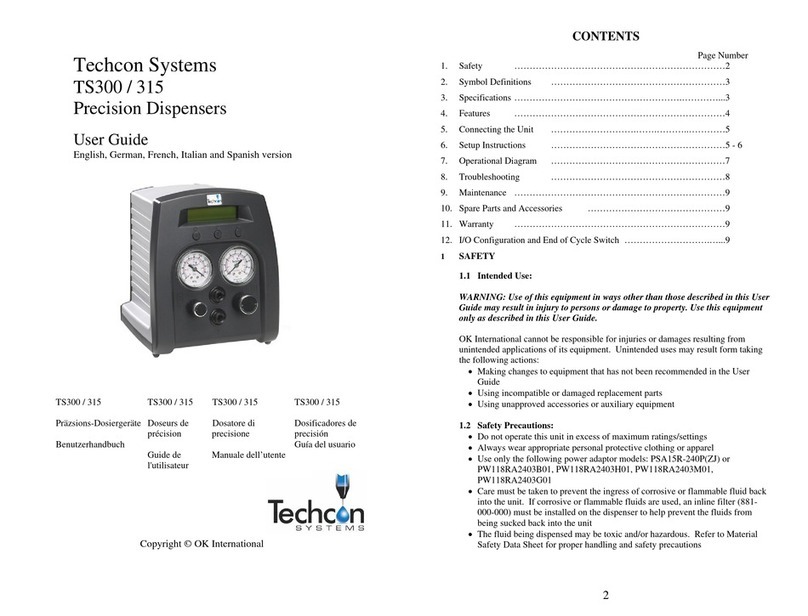
TECHCON SYSTEMS
TECHCON SYSTEMS TS300 user guide
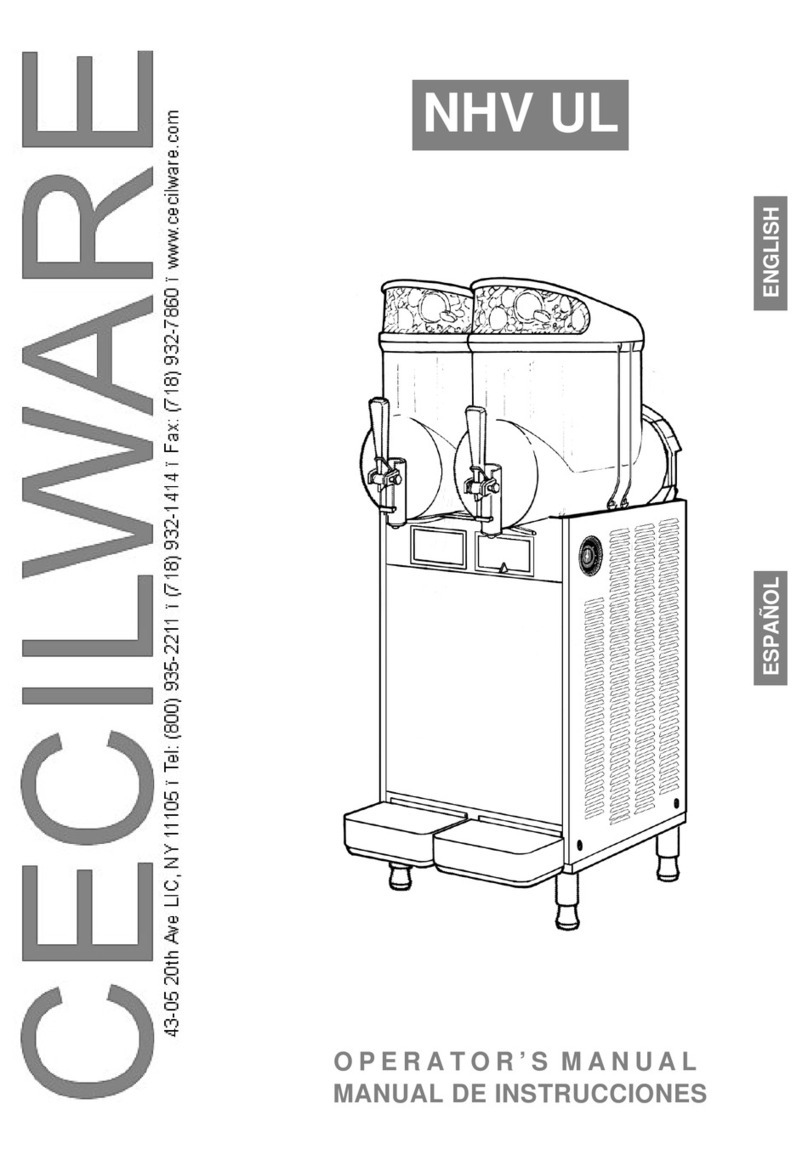
Cecilware
Cecilware NHV-2-UL Operator's manual
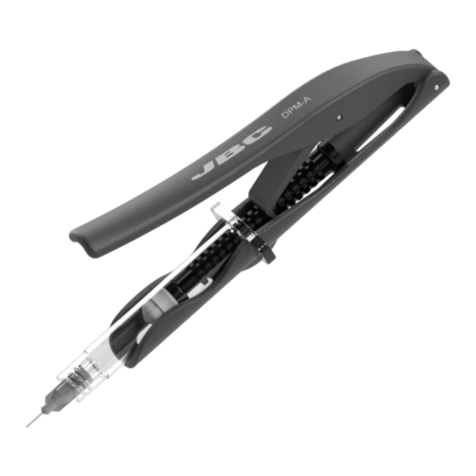
jbc
jbc DPM-A instruction manual
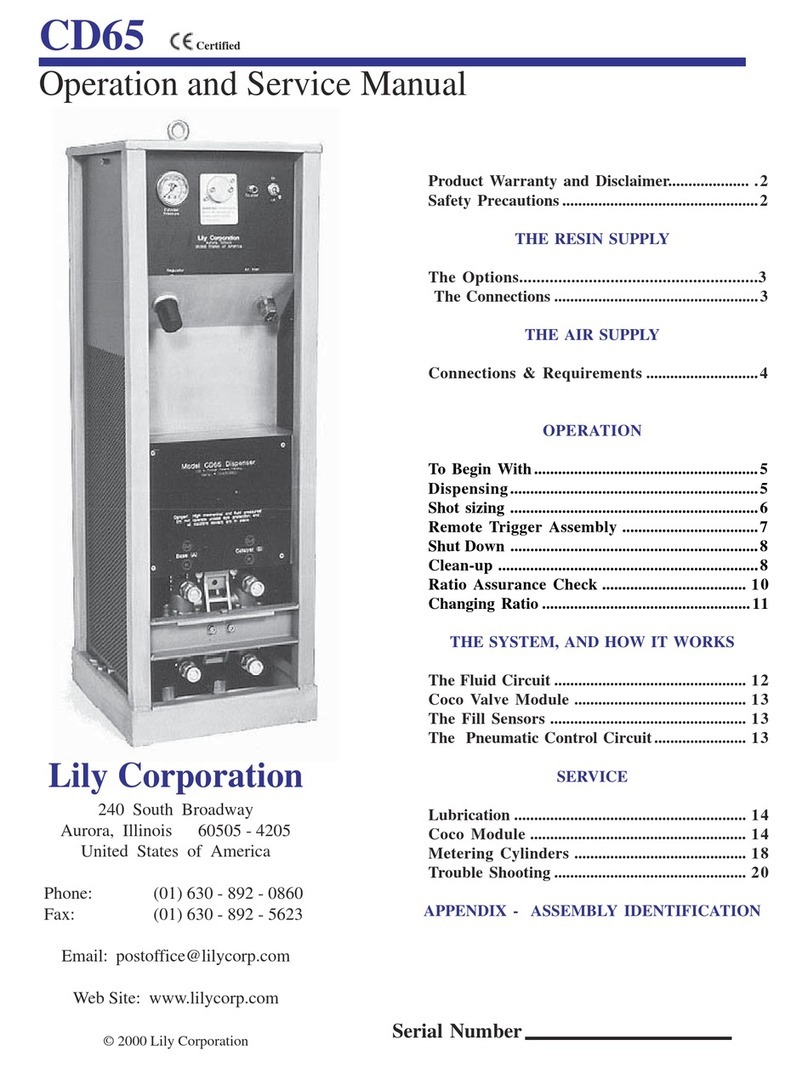
Lily Corporation
Lily Corporation CD65 Operation and service manual
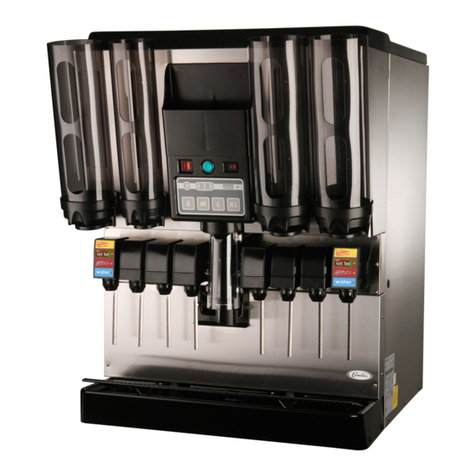
Cornelius
Cornelius IDC 255 PROGATE DRIVE THRU UNIT Operator's manual
